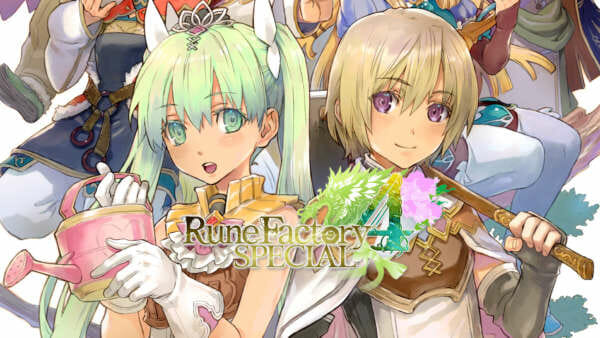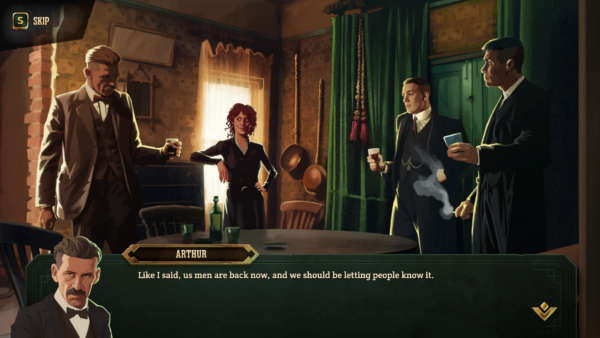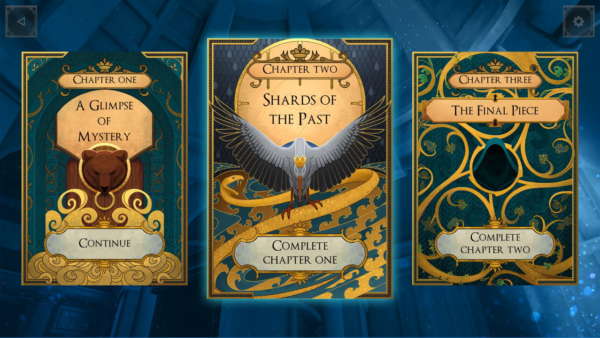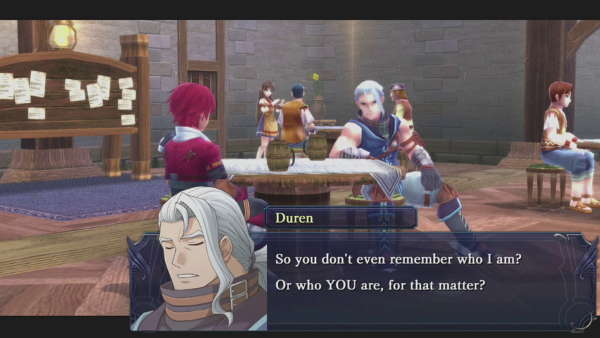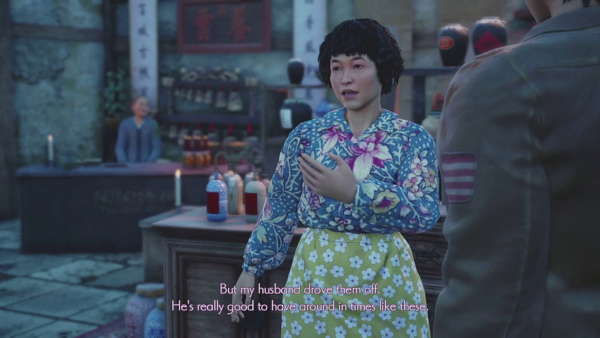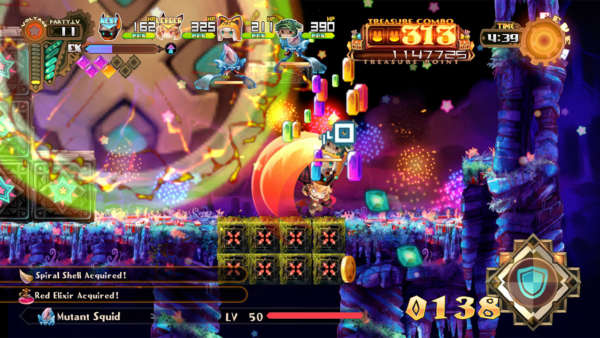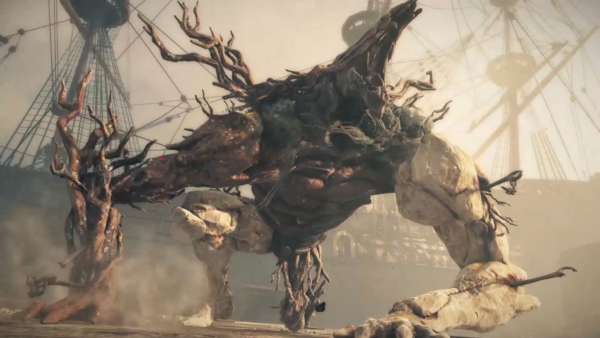Traveller’s Tales have never lacked scope when adapting a franchise into virtual Lego. You don’t get much larger than the Star Wars, Marvel Universe, Harry Potter and Middle-Earth. Anything that is hammering major money out for Time Warner eventually gets the plastic brick treatment, so it was only a matter of time before the Cheshire based studio took a double-dip into the land of Orcs and Ents, with J.R.R Tolkien’s, The Hobbit.
Following the adventures of Bilbo Baggins, Gandalf and the 13 dwarves of poor-naming-convention, Lego: The Hobbit (another awkward name) covers the first two movies worth of the journey there, with the “and back again” part to be released as DLC at some point after the final film hits the big screen. It is an enjoyable adventure, bouncing from set-piece to set-piece and taking around 8 hours for the main missions, without taking time to explore Middle-Earth and tracking down extra characters and collectibles.

It’s All Dramatic ‘n’ Studs
By this point, what more can really be said about the basic Lego game formula? Lego The Hobbit does very little to stray from the studded golden path that Traveller’s Tales have set out for themselves. Lift the dialogue and soundtrack from the film, loosely adapt the characters abilities and the locations and mix it all with some light physical comedy. It seems by this point that Traveller’s Tales are following the same style of step by step instructions as it takes to build an actual Lego set.
The odd thing is, despite treading the same ground, with a fresh coat of Middle-Earth produced paint, it is one of the most charming entries to the series in years. Balling around the shire with your Dwarven crew, as the soundtrack from the Lord of the Rings trilogy plays, makes the over-world feel grander than the miniature scale conveys. Opening up more as you complete story missions, Middle-Earth can be scoured for extras, but it isn’t truly open up until after Bilbo’s quest is over. Until that point, you are stuck with the characters present in the story at that moment, making the majority of the over-world a massive tease until you “complete” the available two thirds of the story.
Being able to walk from Rivertown to The Shire is an enjoyable trip, full of side-paths and hidden areas, with each discovery rewarding you with new puzzles and characters. It is much more impressive than the main campaign, which, while given enough polish and care to be enjoyable, feels a little sterile and played out in comparison. The slow burn of the wide-open fields of Middle-Earth becomes more rewarding than the tightly scripted action sequences that attempt to deliver epic action on a small scale.
The one relatively new feature is the ability to “craft” items. By finding materials – acquired by wanton destruction, trading with NPC’s or playing mini-games to mine/fish them – you either use collectible schematics or plot specific points to make context sensitive items for over-world quests or to progress. It’s a nice touch that breaks up the usual pacing and is definitely more engaging that the “hold button to construct doodad” method that is used to amusingly (read: awkwardly) segue from one moment of gameplay to another. Crafting barely gives a sense of interaction than holding a button, only because it requires you to choose pieces from a small selection to match the one flashing on an image. Overall, the addition of “constructing” objects feels like a poor attempt to add some depth to games which are all about a toy that you use to build stuff. With so much of the over-world content relying on this, it is a constant reminder on how woefully shallow it is.

The Lego Universe Is Sorely Underpopulated At Times
Apart from this, there is very little else to be said about Lego: The Hobbit. The vast majority of the experience is boilerplate Lego game territory, except given a Hobbit themed facelift that makes everything excessively melodramatic. It has enough of the charm and moments of slapstick silliness you’d want to entertain the younglings, while giving enough lip service to the source material to make older fans happy. Lego: The Hobbit is basically a good game, but it does little to go above and beyond what we consider basic for the entire Lego game franchise. What elevates it slightly is the carried over contents from Peter Jackson’s extended love letter to J.R.R Tolkien. Maybe by the time Traveller’s Tales get around to releasing their next adaptation, they can make Lego seem as much fun as it once was again.
Traveller’s Tales have never lacked scope when adapting a franchise into virtual Lego. You don’t get much larger than the Star Wars, Marvel Universe, Harry Potter and Middle-Earth. Anything that is hammering major money out for Time Warner eventually gets the plastic brick treatment, so it was only a matter of time before the Cheshire based studio took a double-dip into the land of Orcs and Ents, with J.R.R Tolkien’s, The Hobbit.
Following the adventures of Bilbo Baggins, Gandalf and the 13 dwarves of poor-naming-convention, Lego: The Hobbit (another awkward name) covers the first two movies worth of the journey there, with the “and back again” part to be released as DLC at some point after the final film hits the big screen. It is an enjoyable adventure, bouncing from set-piece to set-piece and taking around 8 hours for the main missions, without taking time to explore Middle-Earth and tracking down extra characters and collectibles.
By this point, what more can really be said about the basic Lego game formula? Lego The Hobbit does very little to stray from the studded golden path that Traveller’s Tales have set out for themselves. Lift the dialogue and soundtrack from the film, loosely adapt the characters abilities and the locations and mix it all with some light physical comedy. It seems by this point that Traveller’s Tales are following the same style of step by step instructions as it takes to build an actual Lego set.
The odd thing is, despite treading the same ground, with a fresh coat of Middle-Earth produced paint, it is one of the most charming entries to the series in years. Balling around the shire with your Dwarven crew, as the soundtrack from the Lord of the Rings trilogy plays, makes the over-world feel grander than the miniature scale conveys. Opening up more as you complete story missions, Middle-Earth can be scoured for extras, but it isn’t truly open up until after Bilbo’s quest is over. Until that point, you are stuck with the characters present in the story at that moment, making the majority of the over-world a massive tease until you “complete” the available two thirds of the story.

You’d Be This Angry If You Trod On Another Lego Piece
Being able to walk from Rivertown to The Shire is an enjoyable trip, full of side-paths and hidden areas, with each discovery rewarding you with new puzzles and characters. It is much more impressive than the main campaign, which, while given enough polish and care to be enjoyable, feels a little sterile and played out in comparison. The slow burn of the wide-open fields of Middle-Earth becomes more rewarding than the tightly scripted action sequences that attempt to deliver epic action on a small scale.
The one relatively new feature is the ability to “craft” items. By finding materials – acquired by wanton destruction, trading with NPC’s or playing mini-games to mine/fish them – you either use collectible schematics or plot specific points to make context sensitive items for over-world quests or to progress. It’s a nice touch that breaks up the usual pacing and is definitely more engaging that the “hold button to construct doodad” method that is used to amusingly (read: awkwardly) segue from one moment of gameplay to another. Crafting barely gives a sense of interaction than holding a button, only because it requires you to choose pieces from a small selection to match the one flashing on an image. Overall, the addition of “constructing” objects feels like a poor attempt to add some depth to games which are all about a toy that you use to build stuff. With so much of the over-world content relying on this, it is a constant reminder on how woefully shallow it is.
Apart from this, there is very little else to be said about Lego: The Hobbit. The vast majority of the experience is boilerplate Lego game territory, except given a Hobbit themed facelift that makes everything excessively melodramatic. It has enough of the charm and moments of slapstick silliness you’d want to entertain the younglings, while giving enough lip service to the source material to make older fans happy. Lego: The Hobbit is basically a good game, but it does little to go above and beyond what we consider basic for the entire Lego game franchise. What elevates it slightly is the carried over contents from Peter Jackson’s extended love letter to J.R.R Tolkien. Maybe by the time Traveller’s Tales get around to releasing their next adaptation, they can make Lego seem as much fun as it once was again.
